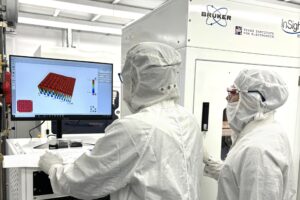AUSTIN, Texas—Dr. Paul Barbara, holder of the R. J. V. Johnson-Welch Endowed Chair in the Department of Chemistry and Biochemistry and director of the Center for Nano- and Molecular Science and Technology at The University of Texas at Austin, has been elected to the National Academy of Sciences (NAS).

|
|
Dr. Paul Barbara
|
Barbara was one of 72 new members chosen on April 25 at the annual meeting of the Academy in recognition of his distinguished and continuing achievements in original research.
NAS is the country’s most prestigious scientific organization, and election to membership in the academy is one of the highest honors that can be accorded a scientist or engineer in the United States.
“Paul Barbara is an exceptional scholar and innovator in physical and materials chemistry,” said William Powers Jr., president of The University of Texas at Austin. “Moreover, he has provided invaluable leadership to the university’s endeavors in nanoscience and nanotechnology. I speak for the entire campus in congratulating him on his election to the National Academy of Sciences.”
Barbara has made revolutionary contributions to the understanding of the molecular structure and dynamics of complex chemical systems, including organic semiconductors, proton and electron transfer reactions and the hydrated electron. Barbara and coworkers achieved this through the development and application of novel ultrafast and single molecule spectroscopies. Barbara’s research has increasingly become focused on nanoscience and nanotechnology, especially involving work on organic nanomaterials.
A member of The University of Texas at Austin faculty since 1998, Barbara was previously the 3M-Alumni Distinguished Professor of Chemistry at the University of Minnesota. He earned his bachelor’s degree at Hofstra University in 1974 and his doctor’s degree at Brown University in 1978.
Barbara is a fellow of IC2, senior editor of the journal Accounts of Chemical Research and co-author of 210 scientific papers. He is a fellow of the American Academy of Arts and Sciences, the American Association for the Advancement of Science and the American Physical Society. He was an Alfred P. Sloan Foundation Fellow and a recipient of a National Science Foundation Presidential Young Investigator Award and Creativity Award.
Barbara is one of the founding members and co-directors of the Air Force Office of Scientific Research supported Strategic Partnership for Research in Nanotechnology (SPRING). This consortium has played a key role in rapidly advancing nanotechnology at Texas universities.
The National Academy of Sciences is a private organization of scientists and engineers dedicated to the furtherance of science and its use for the general welfare. It was established in 1863 by a congressional act of incorporation signed by Abraham Lincoln that calls on the Academy to act as an official adviser to the federal government, upon request, in any matter of science or technology.
For more information contact: Syed Kamal, 512-471-3655; Lee Clippard, 512-232-0675.



